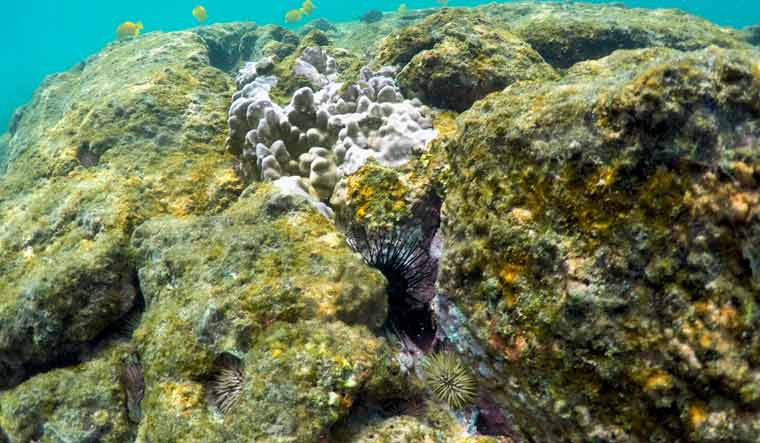Papa Bay on Hawaii's Big Island is home to one of the islands' most abundant and vibrant coral reefs. The corals are now dying out, thanks to a heatwave engulfing the island.
Just four years after a major marine heatwave killed nearly half of this coastline's coral, federal researchers are predicting another round of hot water will cause some of the worst coral bleachings the region has ever experienced.
"In 2015, we hit temperatures that we've never recorded ever in Hawaii," said Jamison Gove, an oceanographer with the National Oceanic and Atmospheric Administration.
"What is really important or alarming, probably more appropriately about this event is that we've been tracking above where we were at this time in 2015."
High-tech equipment is being used to detect bleaching in the bay caused by the marine heatwave causing the temperature to soar to record highs in June, July and parts of August. So far in September, oceanic temperatures are below only those seen in 2015.
Forecasters expect high temperatures in the North Pacific will continue to pump heat into Hawaii's waters well into October.
"Temperatures have been warm for quite a long time," Gove said. "It's not just how hot it is. It's how long those ocean temperatures stay warm." Coral reefs are vital around the world as they not only provide a habitat for fish the base of the marine food chain but food and medicine for humans.
The coral reef creates an essential shoreline barrier that breaks apart large ocean swells and protects densely populated shorelines from storm surges during hurricanes.
In Hawaii, reefs are also a major part of the economy as tourism thrives largely because of coral reefs that help create and protect iconic white sand beaches.
Local wind patterns, currents and even features on land can create hot spots in the water.
"You have things like two giant volcanoes on the Big Island blocking the predominant trade winds," making the island's west coast, where Papa Bay sits, one of the hottest parts of the state, Gove said. He said he expects "severe" coral bleaching in those places.
"This is widespread, 100% bleaching of most corals," Gove said. And many of those corals are still recovering from the 2015 bleaching event, meaning they are more susceptible to thermal stress.
According to NOAA, the heat wave's causes include a persistent low-pressure weather pattern between Hawaii and Alaska that has weakened winds that otherwise might mix and cool surface waters across much of the North Pacific. The cause of this, however, is unclear
For coral, hot water means stress, and prolonged stress kills these creatures and can leave reefs in shambles.
Bleaching occurs when stressed corals release algae that provide them with vital nutrients. That algae also gives the coral its colour, so when it's expelled, the coral turns white.
In remote Papa Bay, most of the corals have recovered from the 2015 bleaching event, but scientists worry they won't fare as well this time.
"Nearly every species that we monitor has at least some bleaching," said ecologist Greg Asner, director of Arizona State University's Center for Global Discovery and Conservation Science, after a dive in the bay earlier this month.
"What's really important here is that we're taking these (underwater) measurements, connecting them to our aircraft data and then connecting them again to the satellite data," Asner said.
"After the heatwave ends, we will have a good map with which to plan restoration efforts," Asner said. As per research, lowly exposing coral to heat in labs can condition them to withstand hotter water in the future.


